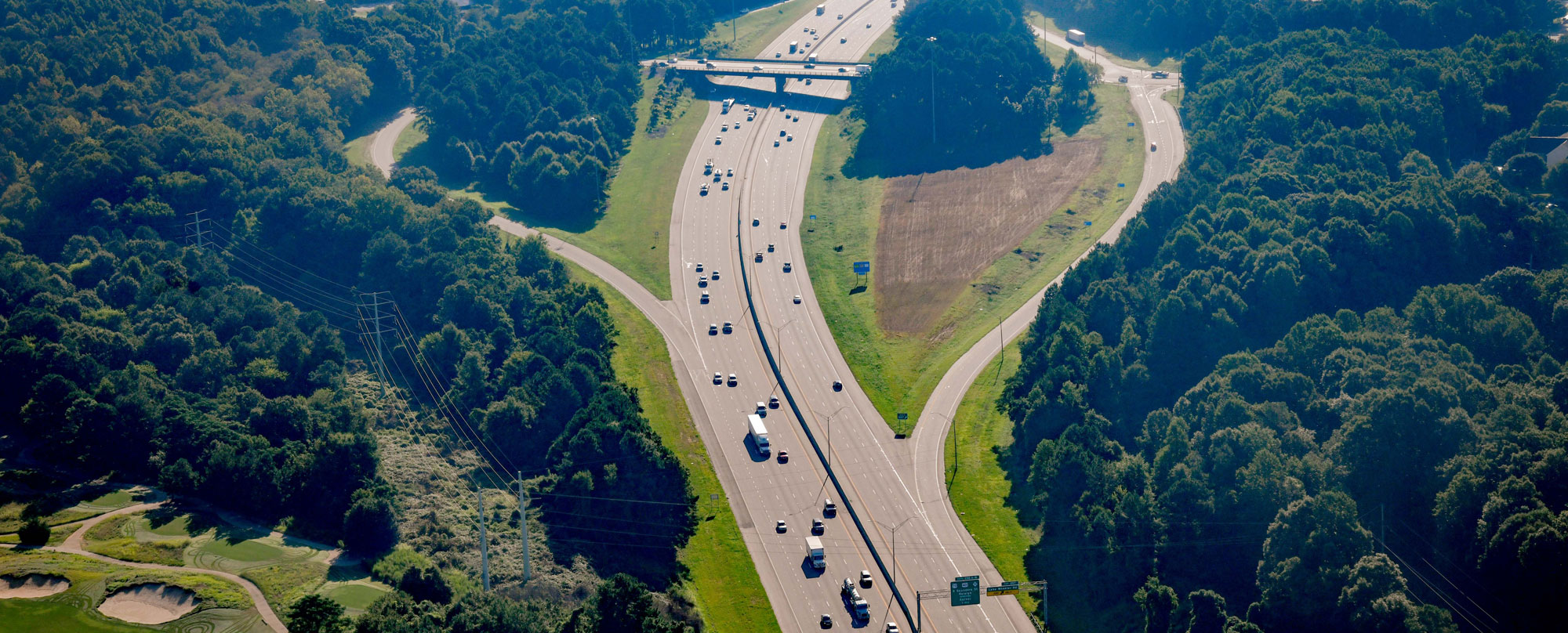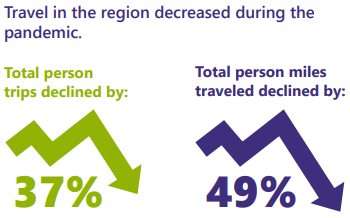How COVID-19 changed travel behavior in the Triangle, and what it means for our transportation future

As many Triangle residents experience a continued shift toward a “new normal” in our daily lives, researchers at NC State’s Institute for Transportation Research and Education (ITRE) have been busy examining a time when COVID-19 was still severely upending our habits and routines. The pandemic has impacted every part of our lives and society, and transportation is no exception. But what can transportation planners and researchers learn from the last two years, and how will it help us prepare for other fundamental shifts in travel behavior that we know are coming?
In 2016, NCDOT and several transportation agencies in the Triangle wanted to better understand how people move around and how that changes over time, to help inform their planning efforts. ITRE partnered with RSG to develop and conduct the Triangle Travel Survey, and took the lead on analyzing the resulting data. The idea was to repeat the study every two years, and the 2016 and 2018 surveys both provided valuable, actionable insights.
What nobody could have predicted was that a global pandemic would cause massive, unpredictable changes to travel patterns, presenting an opportunity to study the real-world effects of hopefully-once-in-a-lifetime circumstances on how we use our roads, transit systems, sidewalks, greenways and more. The impacts of COVID-19 delayed the third Triangle Travel Survey, but it was vital to still move forward–and it launched in Spring 2021 with over 40,000 households in the Triangle region invited to participate. Residents were asked to record their travel behavior by either keeping a journal or downloading a location-tracking app, and over 1,000 households participated in the 2021 survey.
The results show enormous shifts in travel behavior including how, how often, how far, why and when people travel
 Total trips per-person declined by 37% and miles traveled per-person decreased by an astounding 49%. Travel for educational reasons went down significantly, with trips for K-12 schools and Universities dropping by 61% and 85% respectively. And while travel by car was reduced by a third, all other modes such as walking, biking and bus transit were together down 61%.
Total trips per-person declined by 37% and miles traveled per-person decreased by an astounding 49%. Travel for educational reasons went down significantly, with trips for K-12 schools and Universities dropping by 61% and 85% respectively. And while travel by car was reduced by a third, all other modes such as walking, biking and bus transit were together down 61%.
These are just a few of the statistics included in the full fact sheet: The Impact of COVID-19 on Travel Behavior in the Triangle Region (PDF)
A new section was added to the 2021 survey that asked people to document their commuting behavior before and during COVID, and to make a post-COVID prediction. Before COVID about a quarter of Triangle residents worked either partially or fully from home, but nearly half expect to do so after COVID. It’s likely that many of the travel behavior changes observed during the peak of COVID will be long-lasting or permanent, even if not to the same scale.

What do these results mean for the future of transportation in the Triangle and beyond?
Do planners, modelers and researchers need to throw out their prior assumptions and start over? Or should they just assume that everything will eventually go back to normal until the data show otherwise?
Of course, the answer is neither. Transportation experts have always known that the future is uncertain, and they already account for some uncertainty. Even if large-scale disruptions from a public health emergency are behind us, increases in teleworking, connected and autonomous vehicles, electrification and alternative fuels, car sharing and more will continue changing the future of our transportation systems.
Ongoing research, analysis and planning are needed so we can prepare for those changes, and understand just how different our transportation future may be. The 2022 Triangle Travel Survey is an important next step–so if you get a postcard in the mail when it kicks off this Fall, make sure you’re part of it.